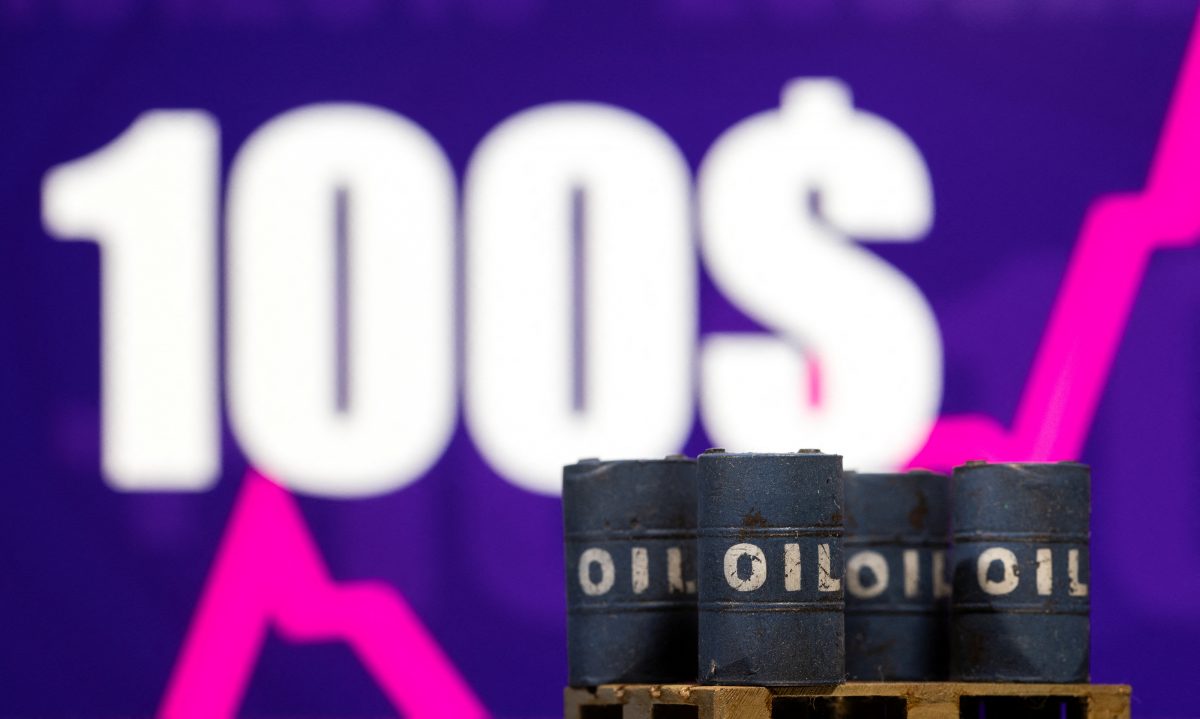LONDON, (Reuters) – Oil prices jumped today, with Brent rising above $105 a barrel for the first time since 2014, after Russia’s attack on Ukraine exacerbated concerns about disruptions to global energy supply.
Russia launched an all-out invasion of Ukraine by land, air and sea in the biggest attack by one state against another in Europe since World War Two.
The United States and Europe have promised the toughest sanctions on Russia in response.
“If sanctions affect payment transactions, Russian banks and possibly also the insurance that covers Russian oil and gas deliveries, supply outages cannot be excluded,” said Commerzbank analyst Carsten Fritsch.
Brent crude LCOc1 rose $8.24, or 8.5%, to $105.08 a barrel at 1045 GMT. U.S. West Texas Intermediate (WTI) crude CLc1 jumped $7.78, or 8.5%, to $99.88.
Brent and WTI hit their highest since August and July 2014 respectively.
“Russia is the third-largest oil producer and second-largest oil exporter. Given low inventories and dwindling spare capacity, the oil market cannot afford large supply disruptions,” said UBS analyst Giovanni Staunovo.
“Supply concerns may also spur oil stockpiling activity, which supports prices.”
Russia is also the largest provider of natural gas to Europe, providing about 35% of its supply.
Global oil supplies remain tight as demand recovers from pandemic lows.
Underscoring the tight market, premiums on crude contracts for loading in one month over contracts for loadings in six months <LCOc1-LCOc7 >, a metric closely watched by traders, hit a record high at $11.55 a barrel.
“This growing uncertainty during a time when the oil market is already tight does leave it vulnerable, and so prices are likely to remain volatile and elevated,” said Warren Patterson, head of ING’s commodity research.
Analysts believe that Brent is likely to remain above $100 a barrel until significant alternative supplies become available from OPEC, U.S. shale or Iran, for example.
The United States and Iran have been engaged in indirect nuclear talks in Vienna that could lead to the removal of sanctions on Iranian oil sales.
Iran’s top security official Ali Shamkhani said on Twitter on Thursday that it is possible to achieve a good nuclear agreement with Western powers after significant progress in negotiations.
Analysts are warning of inflationary pressure on the global economy from $100 oil, especially for Asia, which imports most of its energy needs.
“Asia’s Achilles heel remains its vast import needs for energy, with surging oil prices bound to take a hefty bite out of income and growth over the coming year,” said HSBC economist Frederic Neumann.






